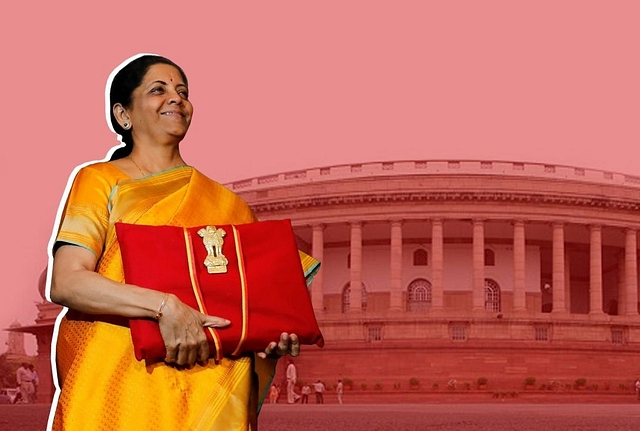
Break With The Past: How About A Budget Every Quarter For The Country?
The time is now ripe for a break with the past. Instead of an annual financial statement, the Union government should consider shifting to a system of quarterly financial statements.
A lot has changed since independent India’s first Union Budget was presented in Parliament on 26 November 1947. It had estimated revenues at a shade over Rs 171 crore, while the latest one estimates gross revenue for fiscal 2020-21 at Rs 2,423,020 crore. The first budget was prepared for a population of around 350 million, while the latest is meant for over 1,370 million citizens.
Up until 1998, the Union Budget used to be presented on the last working day of February at 5 pm. In 1999, the Bharatiya Janata Party (BJP) government broke with colonial-era tradition and advanced the time of presentation to 11 am.
In 2016, Narendra Modi’s government decided to present the Union Budget on the first day of February. The government also broke another tradition — the practice of a separate budget for the Indian Railways — with the finances of the transport behemoth being merged with the Union Budget from 2017 onwards.
The time is now ripe for another change and break with the past. Instead of an annual financial statement, the Union government should consider shifting to a system of quarterly financial statements.
Doing so would entail a constitutional amendment, says Subhash C Kashyap, one of India’s foremost experts on parliamentary procedure and constitutional law. “The Constitution of India provides for an annual Budget. A change (to quarterly presentation) would require an amendment to the Constitution,” he told me, adding that he would want to think through in detail the merits of such an idea.
Article 112 of Constitution mandates the Union government to lay before both the houses of Parliament a statement of receipts and expenditure of the government of India for that year, referred to as the ‘annual financial statement’. As is well known, the budget comprises of multiple elements including tax law changes and expenditure allocations.
Another move that can be implemented alongside is for the government to change its accounting year from the current 12-month 1 April-31 March fiscal year to a 1 January-31 December calendar year as is the prevalent practice globally. In its first term, the Modi government was reported to have considered such a proposal.
There are compelling reasons to move to quarterly financial statements by the Union government.
Just as is the practice for private and public sector incorporated entities, the detailed information contained in a quarterly report would allow government bosses and Parliament to get regular updates on spending, revenue collection trends, implementation of schemes, track progress in social and infrastructure development.
This in turn would keep the focus on programme implementation and those responsible on their toes.
The outcomes of budgetary allocations, currently detailed only once a year, would be visible every three months. This frequency of review alone would allow the sunshine of parliamentary scrutiny on implementation and ensure detailed reviews and necessary course correction on a faster basis.
Like private sector executives who must answer to their board and shareholders every quarter, the bureaucrats of the government would then have to answer Parliament and the public of India in a more regularly structured setting.
The Modi government has already demonstrated the resolve to respond to evolving economic situations on an on-going basis including through the changes to corporation tax rates midway during the fiscal year last September.
Earlier, changes to direct tax laws were carried out only via the annual finance bill.
There are fiscal considerations as well. For instance, consider the latest estimate for crude oil prices, that have seen a black swan event with the outbreak of a pandemic in China.
The estimate of crude oil price factored in the latest Union Budget is most certainly going to be impacted with the slowdown in Chinese demand and consequent softening of prices. Imagine the fiscal headroom that can open within one quarter itself instead of waiting for next April. The same logic would apply to revenue mobilisation.
Consider the conservative estimates for revenue and expenditure growth, along with the proposed modest fiscal consolidation in the next fiscal year. Low crude oil prices and a higher than anticipated growth can be the key to open fiscal space for higher public expenditure throughout the year.
Additionally, the final report of the Fifteenth Finance Commission can create further space for the Union government if it recommends the creation of a special pool for defence expenditure in the consolidated fund of India.
Given that the earlier expenditure allocation practices of the Planning Commission and five-year planning have been dispensed with, a quarterly system of reporting of government accounts would ensure that individual ministries would have to pull up their socks and provide more accurate estimates of expenditure. Therefore, they will not have the leeway to bunch up spending to the last quarter, which continues to occur despite standing instructions from the Department of Expenditure of the Union Ministry of Finance.
There are other reasons to consider such a move including the fact that indirect taxation is now a joint Centre-state effort via the Goods and Services Tax Council, which has repeatedly demonstrated the flexibility to respond to the economic situation.
Import tariffs, which are the exclusive preserve of the Centre, have also been adjusted “out-of-budget” by this government and even earlier. Quarterly annual financial statement would also dovetail with Parliament sessions — three of which are usually held every 12 months.
Most of all it may help reduce the hype and hoopla surrounding the once-a-year, mammoth exercise and perhaps help cut the flab in more ways than just the pre-budget halwa.